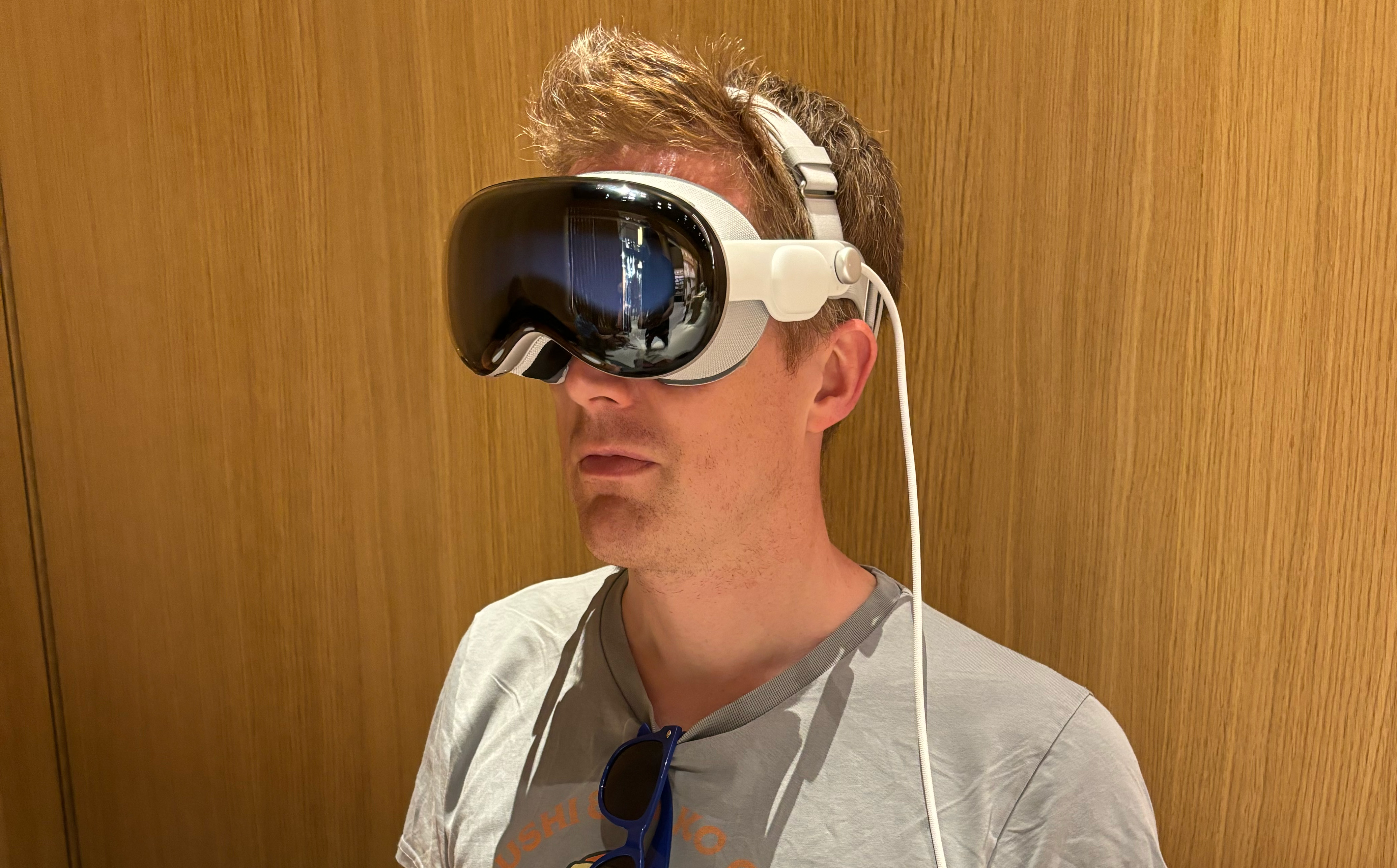Parenthood brings many challenges, but the worst for my money is when your child refuses to eat some delicious food they’ve never tasted. Just try it, you beg, tears running down your face. Everyone likes halloumi.
Not that adults are much better. We’re slightly more likely to give unfamiliar food a chance, I suppose, but unfamiliar people and places and political viewpoints? Good luck with that. Unfamiliar technology, too. iPhone users: when was the last time you gave Android a proper try?
All of this came to mind last week when I finally got a chance to try out Vision Pro, Apple’s mixed-reality headset. (It launched in the U.S. back in February, but only recently became available to demo and buy here in the U.K.) Everyone has an opinion on Vision Pro, which was publicly announced as long ago as June last year, but very few people seem prepared to put those opinions to the test.
And believe me, the Vision Pro demo really is eye-opening. Because of the lack of a useful parallel (it isn’t remotely similar to using an Oculus or any of the other VR products on the market) it’s extraordinarily difficult to convey what the experience is like. I can outline the basics, such as the eye tracking and finger tapping required to navigate the interface, but that doesn’t get across the way this feels, or how those feelings change as you grow accustomed to the device. You just need to experience it for yourself.
Personally, I was surprised by how complex the fitting process is, and how tricky it can be to get set up with the optimal Light Seal and headband; a facial scan is supposed to help with this, but my first seal had to be sent back and replaced. Then simply tightening the straps up just the right amount so the weight is distributed comfortably across your forehead and cheeks is more challenging than you might expect, and took some time and various checks before everything was arranged exactly right. This might seem like a complaint, but I was impressed by the commitment and patience shown to make sure the product was at its very best for the demo.
Because it really was worth the wait. Using Vision Pro is an odd experience but an utterly immersive one, thanks to the carefully calibrated fit and exceptionally high-quality hardware. There were several moments in the demo where I gasped, or laughed, or looked around excitedly like a tourist, simply because the headset does such a good job of making you feel like you’re inside its media. The spatial home movies of strangers could have felt artificial (anyone who’s seen the troubling 1995 thriller Strange Days will know roughly what I mean), but the effect is so compelling that it made me think about my own memories and what it would be like to relive them in this format. It was oddly poignant.
Hollywood too will be watching the progress of spatial video with the greatest of interest. The demo included a gasp-inducing sizzle reel peppered with up-close dinosaurs and rhinos; no doubt someone is already doing the math to see if a superhero movie in this format would make financial sense. Even 2D films look great in Vision Pro’s virtual cinema, and I can imagine that long-haul flights will be greatly improved if you remember to bring your headset and a pair of AirPods.
Those who can no longer afford to attend big concerts will find this format a close second best. And as for watching sports in a spatial format… this might be a longer-term prospect, but the potential is enormous. All of this is going to take time and a significant investment but Vision Pro presents an incredible opportunity for bringing events to people rather than selling a limited number of tickets.
David Price / Foundry
The media side of things, then, is a triumph for Vision Pro. But it’s also important to cover the more challenging aspects, such as that unfamiliar control method mentioned earlier. Once again Apple’s patient expert had to metaphorically hold my hand, since I suspect the interface would have been baffling without assistance. Moving over the years from iPod to iPhone, from iPad to Apple Watch, has always felt like a natural and intuitive evolution, but the Vision Pro is completely new.
To select an icon you have to look at it and then tap your finger and thumb together. Both of these elements were a cause of mild stress for me, particularly at first. I’ve always had a strong aversion to the idea of eye-tracking technology, which feels intrusive and dystopian in ways I can’t fully explain. And I felt anxious about the gesture recognition too, thanks partly to my tendency to fidget nervously and partly to my general worrying about getting things wrong. There’s just, for me, a continuous low-level anxiety about having the movements of my hands and eyes constantly monitored.
But here’s the thing—it quickly gets better. My stress had dipped significantly by the end of the demo, whereas my excitement about the immersive media elements had not. And that’s why it’s so important to experience Vision Pro thoroughly for yourself: you don’t know which parts you’ll like and which you won’t until you try it, and you don’t know if those effects are temporary until you try it properly.
I hope my thoughts in some small way help you understand what Vision Pro is. (You can read a far more thorough account in our Vision Pro review.) But the message I’d like you to take away is that, more than any other Apple product, this is something you have to decide for yourself. And for that, you need to book yourself a demo and eat the damn halloumi.
Source : Macworld








